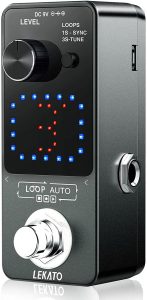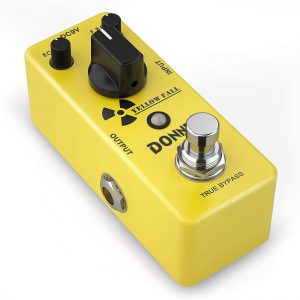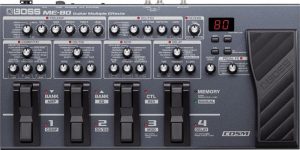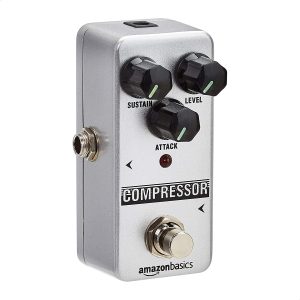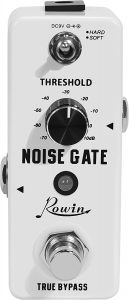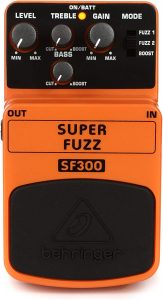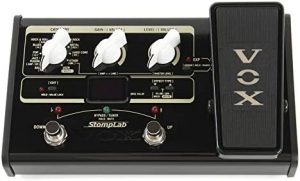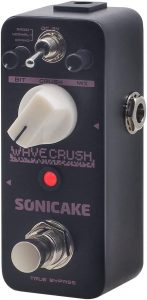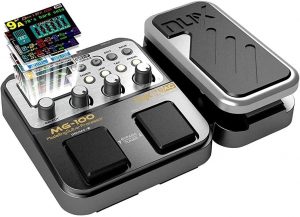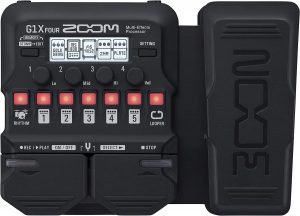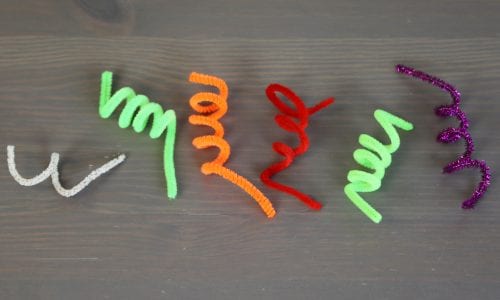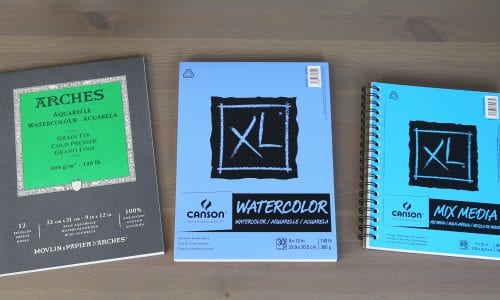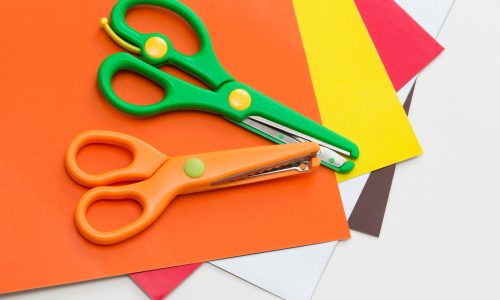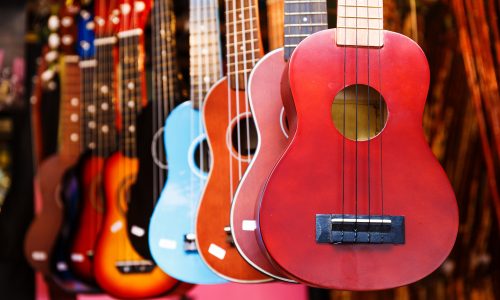The Best Guitar Effect Pedal
We looked at the top 10 Guitar Effect Pedals and dug through the reviews from 28 of the most popular review sites including and more. The result is a ranking of the best Guitar Effect Pedals.
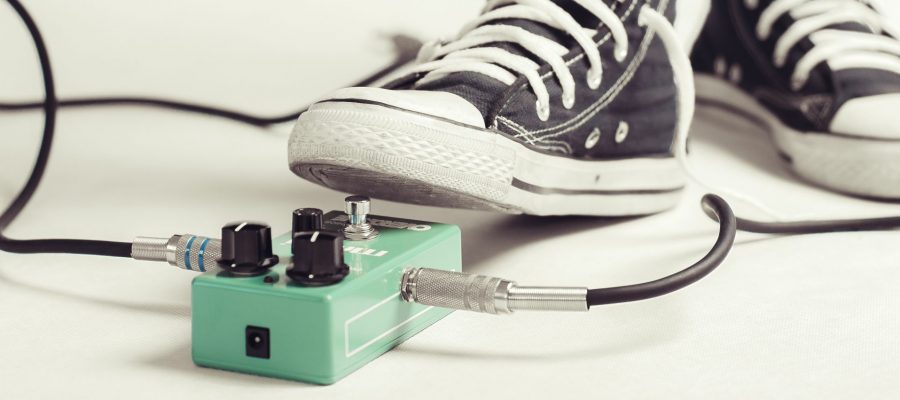
Our Review Process
Don't Waste Your Money is focused on helping you make the best purchasing decision. Our team of experts spends hundreds of hours analyzing, testing, and researching products so you don't have to. Learn more.
Our Picks For The Top Guitar Effect Pedals
- 1. LEKATO Unlimited Overdubs Looper Guitar Effect Pedal
- 2. Donner True Bypass Delay Guitar Effect Pedal
- 3. Boss ME-80 Multi-Effects Floor Processor Guitar Effect Pedal
- 4. Rowin Noise Gate Suppressor Guitar Effect Pedal
- 5. Amazon Basics Analog Circuit Compressor Guitar Effect Pedal
- 6. Behringer SUPER FUZZ SF300 Distortion Guitar Effect Pedal
- 7. VOX StompLab 2G Modeling Multi-Effects Guitar Effect Pedal
- 8. SONICAKE Wave Crush Bitcrusher Reducer Guitar Effect Pedal
- 9. Asmuse MG-100 Multi-Effects Looper Guitar Effect Pedal
- 10. Zoom G1X FOUR Multi-Effects Processor Guitar Effect Pedal
This looper guitar effect pedal does recording and playback at any moment so you don't miss a beat. It is easy to use by beginners and experts. The pedal has three loops with an 18-minute memory.
Recording and PlaybackThis guitar effect pedal can enter the recording stage at any moment.
This classic guitar effect pedal reproduces a warm and vintage analog delay sound. It has adjustable levels of delay and feedback. The pedal is a fun yellow color.
Classic SoundThis guitar effect pedal reproduces a warm and vintage sound.
This guitar effects pedal has multiple effects with eight footswitches. It offers delay, compression, modulation and other effects. The system is easy to use.
Versatile ChoiceThis guitar effects pedal has multiple effects.
This compressor guitar effect pedal has a broad range that is adjustable. It is made from durable material and is in a small size. The pedal has anti-skid pads on the back for stability.
Broad RangeThis guitar effect pedal compresses sound.
Buying Guide
If you’re new to the electric guitar or have been working on your skills for a long time, experimenting with different sound effects is an exciting prospect. With a guitar effect pedal, you can completely transform your sound, enhance your performance and take your musical skills to another level. A guitar effect pedal is a device that changes the sound your guitar makes by modulating its output.
Different types of guitar effect pedals make different types of sounds. You can use them individually one at a time, or you can link multiple pedals together to create a customized sound effect. Different types of effects include layers of distortion, layers of fuzz, transforming acoustics and more. With the right guitar effect pedal, even beginner players can sound like famous pros – if you use the pedal in the right way.
If you want to boost the sound of your guitar, a gain type pedal is the right choice for you. These pedals can also enhance certain effects that other pedals make, such as fuzz or distortion. Distortion pedals make the sound heavier, darker and more twisted, making it sound a bit warped. If you want to add more snap and punch to your sound, then a compression pedal is the right choice. It is often used together with a distortion pedal. An overdrive pedal is another option if you like the distortion sound, but don’t want it to too strong. Often, the overdrive effect sounds grittier than the distortion pedal. For a more controlled distortion, go with a fuzz pedal, which has a signature electric guitar sound.
There are time-based pedals as well, such as the delay pedal. This effect is great for those that want a more layered sound. The reverb pedal is ideal for those that want an echo and atmospheric feel. Modulation pedals, such as the chorus pedal, completely alter the signal of your guitar. The chorus pedal, for example, duplicates the sound so it sounds like multiple guitars are playing at once. A tremolo pedal raises and lowers the volume which creates a warping effect. And that’s not all – there are many more varieties as well.
Why we recommend these guitar effect pedals?
Products Considered
Products Analyzed
Expert Reviews Included
User Opinions Analyzed
Our experts reviewed the top 10 Guitar Effect Pedals and also dug through the reviews from 28 of the most popular review sites including and more. The result is a ranking of the best of the best Guitar Effect Pedals.
DWYM is your trusted roduct review source. Our team reviews thousands of product reviews from the trusted top experts and combines them into one easy-to-understand score. Learn more.
The Best Bang For Your Buck
Amazon Basics Analog Circuit Compressor Guitar Effect Pedal
Key Takeawy
This compressor guitar effect pedal has a broad range that is adjustable. It is made from durable material and is in a small size. The pedal has anti-skid pads on the back for stability.
What other experts liked
What to Look For
- The type of guitar effect pedals you use will be determined by the type of music you want to play and the kinds of sounds you need. Keep in mind that different pedals do different things, so it’s likely you will need to have more than one guitar effect pedal on hand.
- Where you place your guitar effect pedals on your board matters when you’re using more than one. Keep in mind that different pedals also affect the sound that other pedals make, especially considering where they are placed in relation to other pedals. For example, your vibrator pedal could change the pitch of your distorted tone. Ideally, start with having the tuner first so that you have a pure signal from the guitar. Then add your filter and dynamics pedals, followed by the modulation and pitch shifter pedals, and then the major pedals like distortion and fuzz. The time-based pedals go last at the end of the chain.
- If you’re playing in multiple places, such as in your garage and in the rehearsal hall, then you’ll need a way to transport all of your pedals. Consider getting a guitar effect pedal carrying case or bag so you keep them organized and safe while in transport.
- When it comes to power sources, you’ll want to think past the nine-volt batteries. Look for a specific pedal power source or power block so that you can rely on excellent performance from your pedals while you play.
More to Explore
Did you know that the guitar likely originated in Spain in the 16th century? This early instrument had a much narrower and deeper body than the guitar we know today. The vihuela, which was another guitar-shaped instrument, is what the guitar was based on. The guitar in the 16th century had four courses of strings. The top course was a single string while the three underneath it were double strings. It was tuned C, F, A, D, which is also what the related vihuela and lute were tuned to as well.

